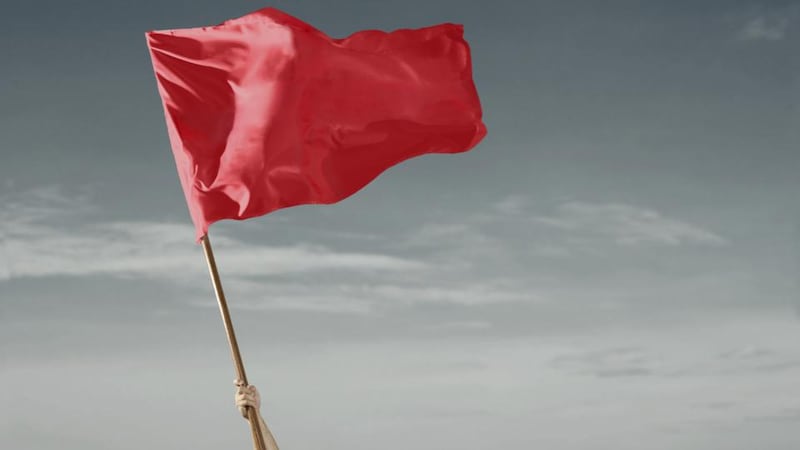At the turn of the 20th century, many European nations were convulsed by internal strife as burgeoning socialist movements sought to wrest power from imperialist and industrialist dynasties.
From Munich to Moscow, communist radicals were engaged in everything from petty street skirmishes to full-blown military coups as opposing political factions vied for control of their war-ravaged countries.
Back in Ireland, while earlier socialist movements were brash and assertive in their demands for labour rights, trade unionists appeared to become more subdued during the War of Independence as the ultimate goal of statehood took precedence over simmering class tensions which were developing.

However, as certain high-profile union leaders such as Liam O’Brien and Thomas Johnson began to be demure amid the nationalistic fervour, militant workers in Limerick remained only too happy to roll up their sleeves and brazenly hoist the red flag wherever it was deemed necessary.
Nowhere was their temerity more evident than in Limerick city itself. Following the death of IRA member Robert Byrne after a botched escape attempt from nearby St Camillus’s Hospital in early April 1919, British forces declared the city a special military area and created a cordon which residents had to produce a crown-issued permit to cross.
Soviet strike committee
Incensed by the development, members of the city’s trades council proclaimed the establishment of a soviet strike committee which would assume control of the area for the next two weeks. Food prices were regulated, a special currency was created, and embattled locals were even forced to rely on the ingenuity of sympathetic hearsemen who transported food and supplies in empty coffins past unwitting soldiers at military checkpoints.
Indeed, as was alluded to in a fascinating TG4 documentary on the subject some years ago, one American tourist ruminated on the complex and alien diplomatic situation which was unfolding around him. “Who rules in these parts? You have to get a military permit to get in, and be brought before the soviet to get a permit to leave”, he was reported as saying.
The nascent soviet was brought to an end later that same month following a visit by officials from the Irish Trade Union Congress’s national executive, who, instead of instigating a promised general strike, ordered the Limerick workers to desist from their actions.
Despite the capitulation, the soviet contagion would continue to spread across the Limerick countryside.
In May 1920, workers at a Knocklong creamery owned by the powerful Cleeves empire deposed the general manager Riordan, and declared the business a soviet. It came as the result of careful preparation undertaken by union organiser Jack Hedley and Cleeves worker Sean O’Dwyer, who arranged a seamless transition whereby sales orders for butter and supplies of milk from local farmers were guaranteed prior to the mutiny.
‘Bread not profits’
A short distance away in Éamon de Valera’s birthplace of Bruree, workers at another Cleeves premises– this time a bakery and mills – revolted on August 26th, 1921, and, after replicating the actions of their comrades in Knocklong, erected a sign reading “Bruree Workers Soviet Mills – We make bread not profits”.
Workers in towns and villages across the Treaty County such as Kilmallock, Castleconnell and Ballingaddy also followed the example set by the Cleeves rebels, and socialist hysteria soon spilled over into neighbouring Tipperary where communities including Clonmel, Carrick-on-Suir and Aherlow all experienced upheaval as impoverished employees took matters of pay and conditions into their own hands.
Chief commissioner of the dockers’ union in Cork, Robert Day, ordered the red flag to be raised above the harbour in 1921, and among the more bizarre occurrences during that tumultuous period was the occupation of a mental asylum in Monaghan, where IRA affiliate Peader Ó Domhnaill solicited the help of staff and inmates in a short-lived takeover.
While workers revelled in their new-found – if somewhat ephemeral – communal positions of authority, the soviet establishments of 1919 to 1923 would prove as fractious an issue for future generations of families in Limerick as the Civil War split.
According to local historian Tom Toomey, whose great grandfather was cousins with John Dowling, one of the leading communist agitators in Limerick at the time, the two men could not bear to be in each other’s company after Dowling’s actions fell foul of the farming community in the area.
In the end, the trinity of disgruntled farmers, disapproving clergy and, most importantly, a successful pro-Treaty side with sympathies in both aforementioned camps spelled an end to Ireland’s fleeting association with soviet sensibilities.
Still, given the day that’s in it, it is worth remembering our very own “red” revolutionaries.









